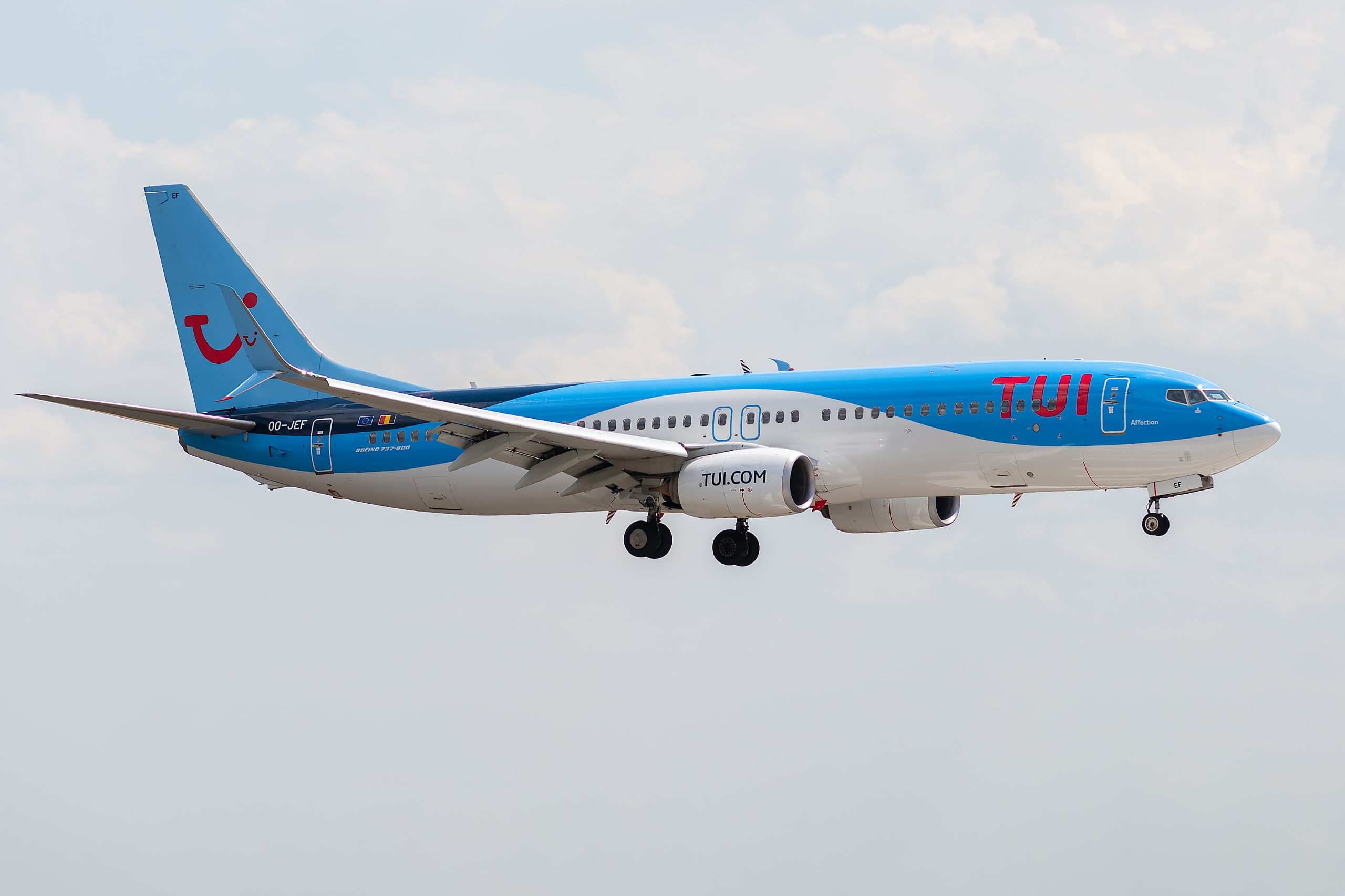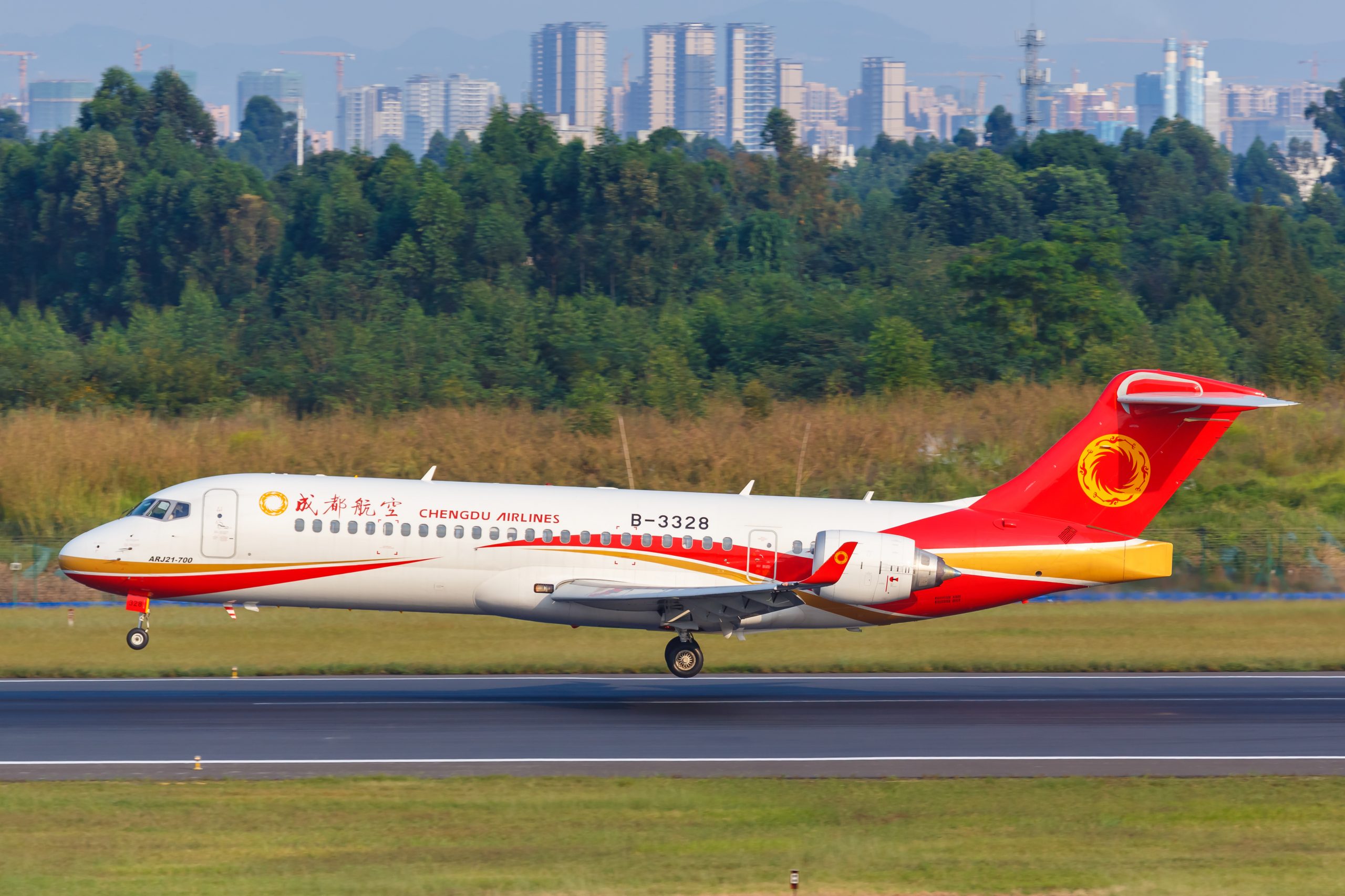COMAC C919
AD Aerospace Systems
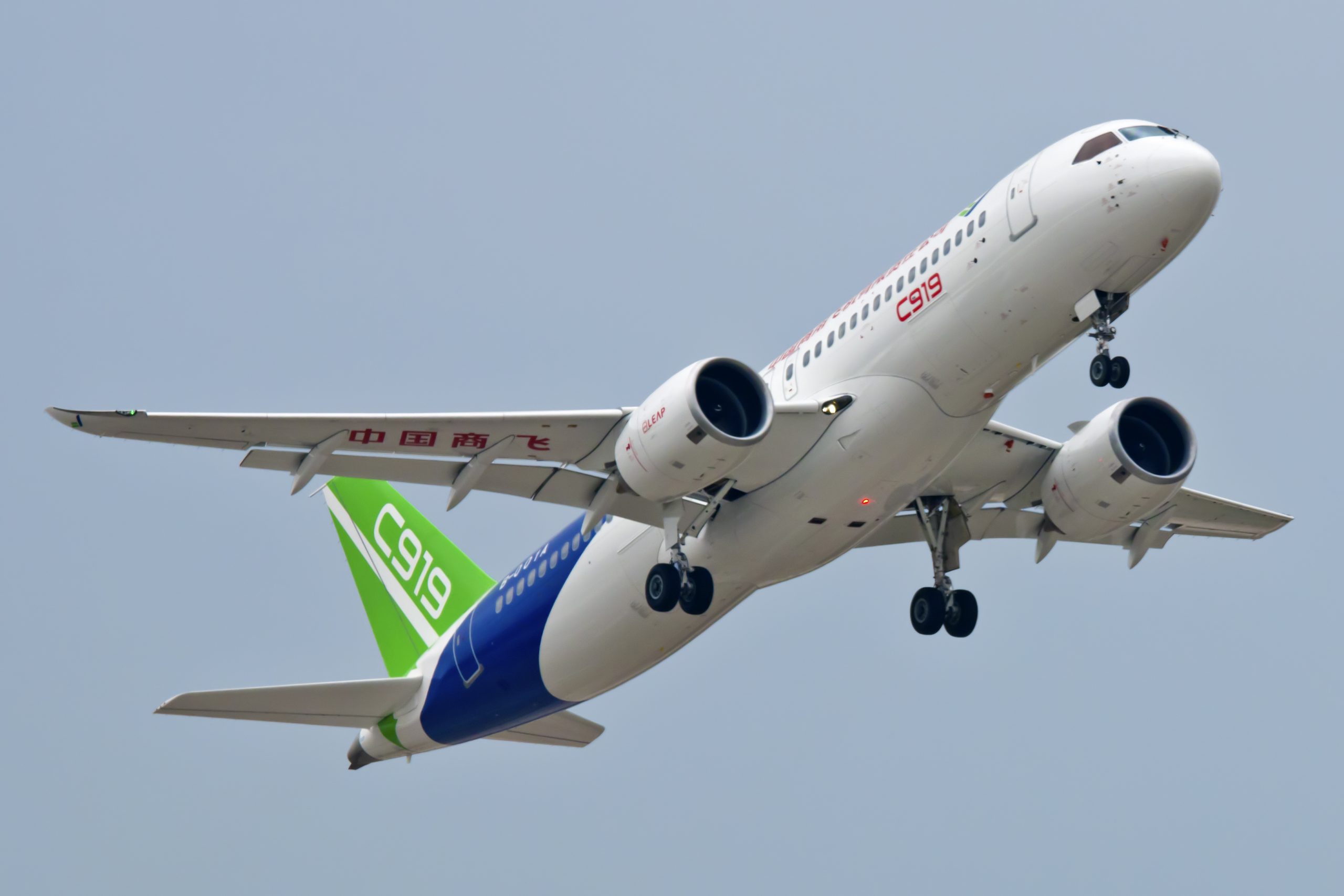
COMAC C919 Video Surveillance
AD Aerospace is the supplier of aircraft wide COMAC C919 video surveillance. This includes the following systems:
- Cockpit Door Surveillance (CDSS) – mandated by the CAAC and EASA.
- Passenger Cabin Surveillance – a customer specified option.
- Cargo Surveillance – a customer specified option.
- External Camera for In-Flight Entertainment (IFE).
AD Aerospace supplies the COMAC C919 with fully qualified full HD IP / Digital video surveillance, which includes the following materials:
- FV-0461 Full HD IP Internal Camera – suitable for CDSS and passenger cabin surveillance. Designed to be fitted within the aircraft, in a pressurised, heated area. The camera also comprises integrated Infra-Red illumination, producing clear images even in low light conditions. Designed for cargo bay or cabin use, the LRU features a recessed design with no protruding parts that enables the unit to be installed in the same environment as moving equipment minimising the risk of accidental damage. The FV-0461 IP Aerospace Camera can be overtly mounted in the cabin as a deterrent whilst not detracting from the aesthetic design of the cabin.
- FV-0462 Full HD IP Domed Internal Camera – best suited for cargo surveillance but can also be used for CDSS and passenger cabin surveillance. The FV-0462 has integrated Infra-Red (IR) illumination. Designed in a compact dome form-factor, the LRU has minimal weight and space requirements. Cabin Panels up to 10mm thick are possible mounting locations for the unit. The FV-0462 Internal Aerospace IP Camera provides a clear 1080p full high definition image. The unit has an integrated webserver and makes the IP stream directly accessible via Ethernet 100BaseT. Additionally, the camera also supports streaming over RTSP (real time streaming protocol) for easy integration with existing systems.
- FV-0361 HD-SDI External Camera – used for IFE. Features high frame rate, HD resolution, and near-zero latency. Designed for external aircraft use up to 50,000ft, the unit is impervious to internal condensation “fogging” as well as external icing, due to an internally controlled heater localised to the optical surface. The optics of the camera are protected with a sapphire glass window which is scratch resistant, and the housing of the camera is manufactured from Titanium alloy. The design of the camera is aerodynamically shaped and has no “edges” to allow water droplet removal as the aircraft moves in the air stream. The window is heated with an internally fitted heater, which allows for the viewing oculus to be automatically de-misted and de-iced at low temperatures. For ease of installation, the unit has a mark identifying vertical orientation, and allows a minimum of 2.5° of adjustment in any orientation, in case of a slightly mis-aligned mounting arrangement.
- FV-0591 Compact Digital Aerospace Video Server – in- house developed (No ITAR) product. Offers a cost-effective High Definition network video recording system, allowing direct connection of up 16 high resolution 2MP IP cameras, which are directly powered by the FV-0591 and 2 HD-SDI cameras. The FV-0591 purpose is to perform conversion to H-264 of the input video streams to provide onward video transmission to an EFB/ Ethernet backbone, providing the pilots the ease of use and the ability to check and assess images using a simple graphical user interface. The data is stored on a solid-state drive, to provide better resilience to vibrations, while at the same time achieve high storage capacity on a media type which is also lightweight when compared to more traditional storage media.
The CAAC and EASA mandated CDSS system satisfies the requirement for a non-intrusive, non-distracting method of identification by the Captain and First Officer of who is trying to gain access to the Cockpit. The system acts as deterrent to terrorism and air rage and helps to prevent catastrophic loss of aircraft from terrorism or revenge motivation. In summary the solution represents a low-cost option to significantly increase levels of aircraft safety and security.
Global regulators strongly recommend video systems. Many European carriers proceeded with the installation of Flight Deck Entry Video Surveillance Systems after 9/11 and before mandates were issued. ICAO Annex 6 – Part 1 – Chapter 13 – Standard 13.2.3(b) (1 Nov 2003):
“means shall be provided for monitoring from either pilot’s station the entire door area outside the flight crew compartment to identify persons requesting entry and to detect suspicious behaviour or potential threat.” This was then interpreted into the Eurocae Minimum Operating Specification ED-123 which describes the minimum specification for a cockpit door surveillance system.
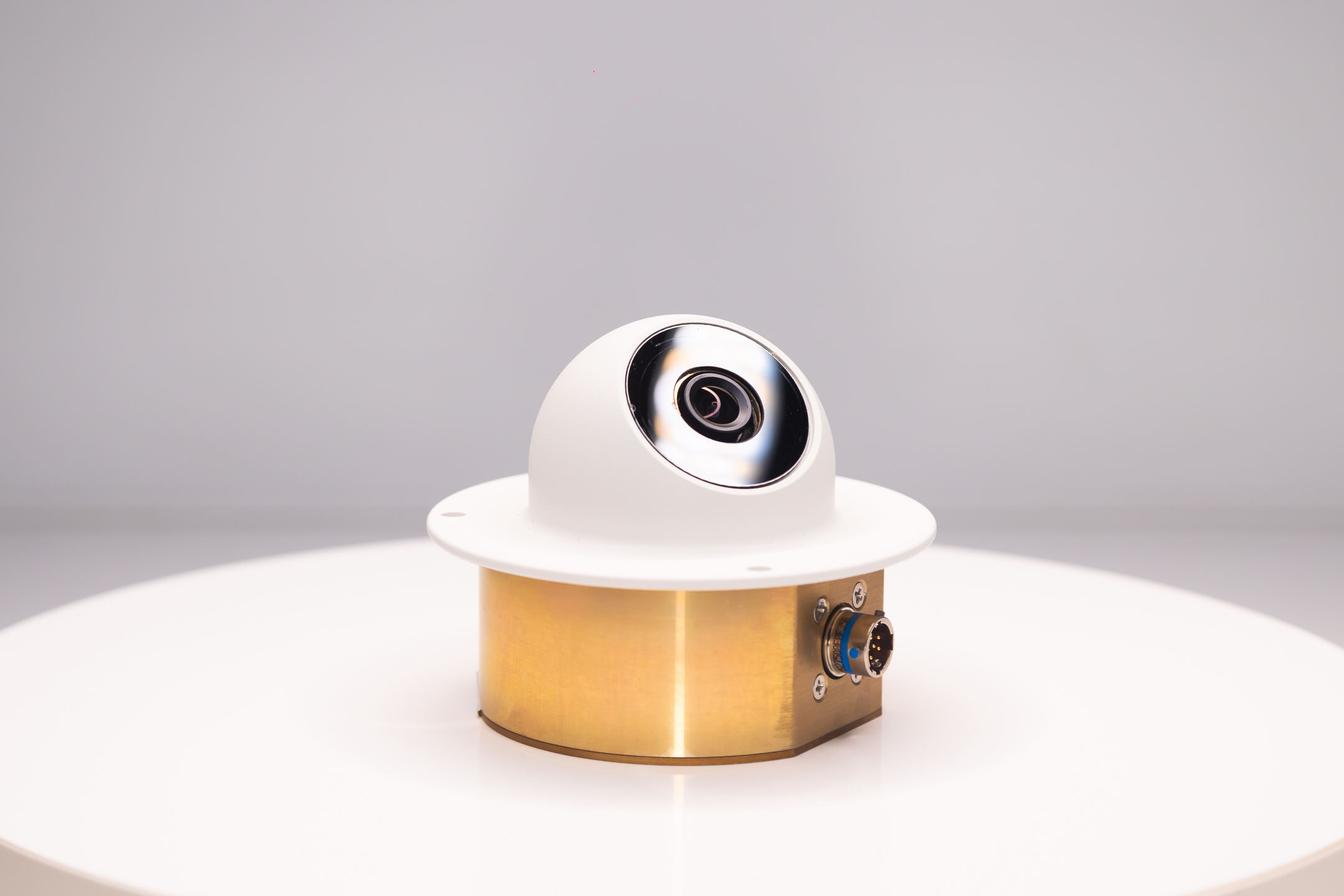
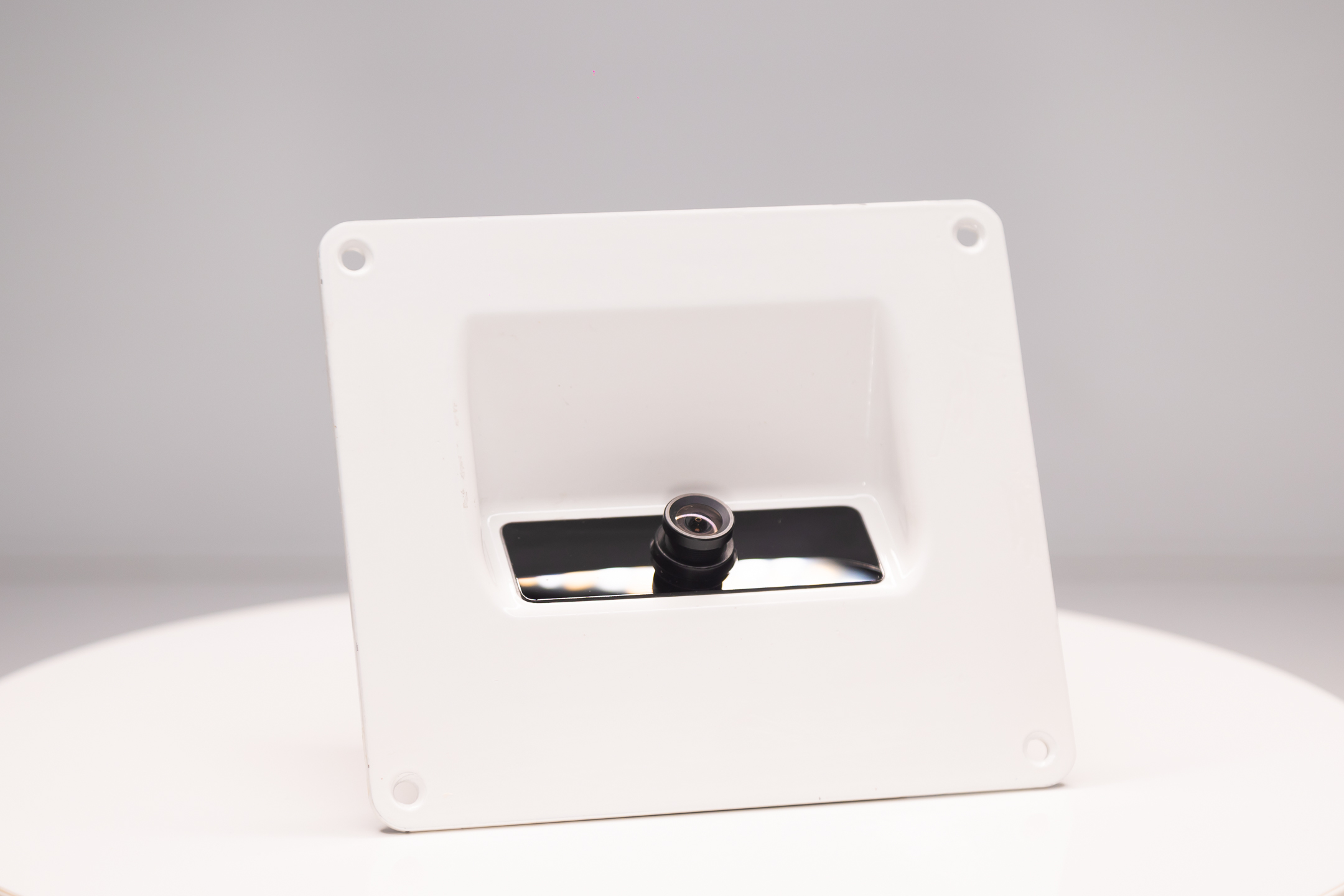
View other systems by aircraft
Want to discuss our products?
Click the button below to contact us today.
Contact Us

